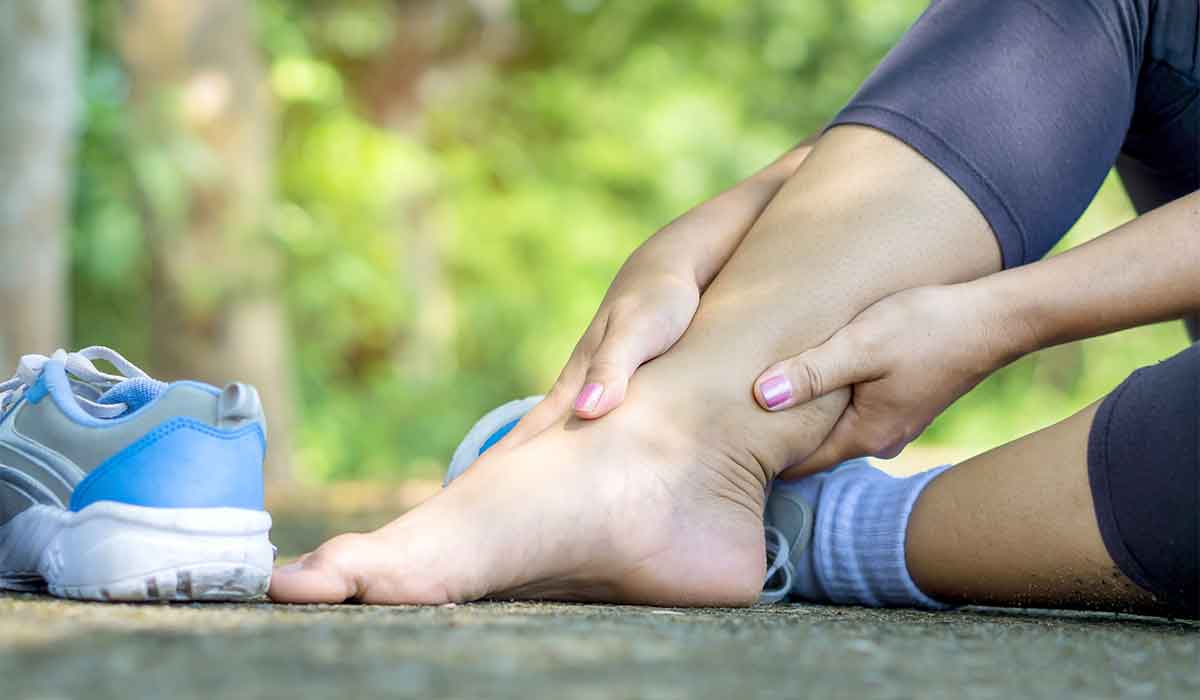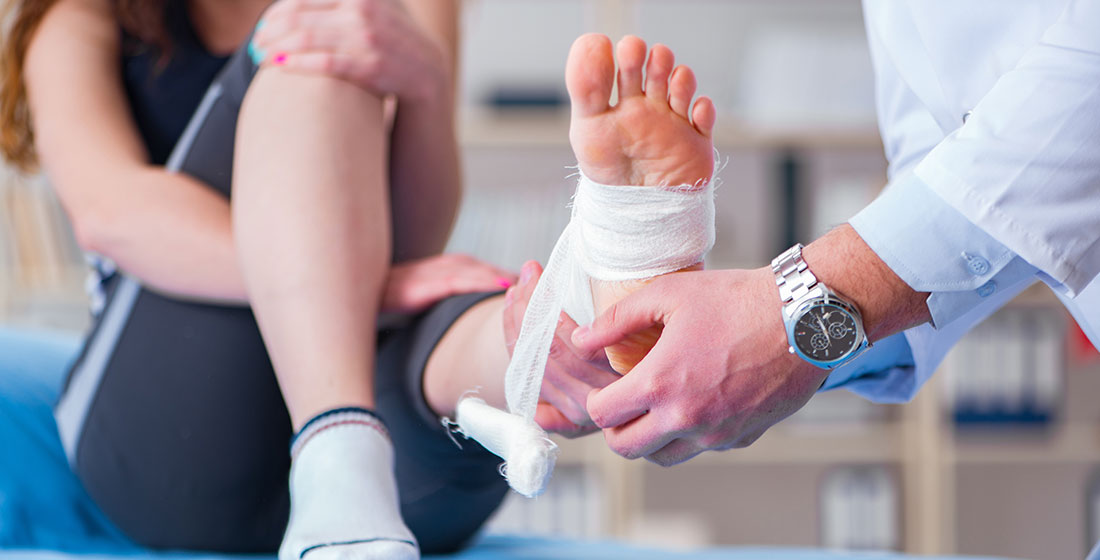Rolled ankles, broken toes, bad blisters, sprains, stubbed toes ...
Throughout your life, experiencing some form of foot pain and heel pain is unavoidable.
If you are lucky, the problem is minor and you feel better quickly. But, sometimes it takes weeks before you can get back to walking, running, and jumping like normal.
Read on to learn more about what causes foot and ankle pain, how to prevent injuries, and when you should see a doctor.
.jpg?width=1600&name=preventing-ankle-and-foot-injuries%20(1).jpg)
Causes of ankle and foot pain
From the tips of your toes and ball of your foot to your arch and ankle, you can experience pain in a wide variety of places on your foot.
Some of the most common reasons people experience foot pain include:
- Daily life accidents, overuse, and athletic mishaps (e.g., tendonitis, bone spurs, bursitis, plantar fasciitis, etc.)
- Tight or ill-fitting footwear (e.g., corns, collapsed arches, pinched nerves, hammertoe, blisters, athlete’s foot, crossover toe, bunions, etc.)
- Diseases and other medical conditions (e.g., arthritis, lupus, diabetes, obesity, etc.)
Home treatments
If you know the cause of your pain and your injury is minor, it is usually safe to attempt to treat your foot or ankle yourself before going to the doctor’s office or urgent care.
Learn how to treat charot foot
In situations like these, you may be able to eliminate or alleviate your pain with cold therapy, over-the-counter nonsteroidal anti-inflammatory drugs, and plenty of rest (including avoiding activities that worsen your pain).
See a doctor before trying self-care for your foot or ankle if:
- You have diabetes
- You don’t know the cause of your pain
- The pain affects both of your feet or ankles
- The pain is widespread
Preventing injuries
Everyday accidents happen—like slipping on a wet floor at a store—but, some are more avoidable than others, especially when it comes to athletics. If you’re training or playing sports, here are some ways you can decrease your risk of hurting your foot or ankle:
- Always stretch and warm up
- Build up your muscles with cross-training
- Listen to your body
- If you start to feel pain, stop doing the activity causing it until the pain goes away
- If you are injured, give your body time to heal before returning to your sport
- If you’ve been previously injured, consider options for preventing a recurrent injury by taping your ankle or wearing a brace
- Wear shoes that provide stability and best match your foot type (and replace shoes when the heels wear down or tread wears out)
- Avoid performing on uneven surfaces
When to get help
If your injury is serious or if your pain debilitating and not going away after trying home remedies, you should see medical attention.
You should schedule an appointment to see a doctor if:
- You notice tingling, burning, or numbness
- Your experience chronic swelling after several days
- Your pain doesn’t improve after several weeks
You should make a trip to urgent care if:
- Your pain is severe
- You can’t walk
- You can’t put weight on your ankle/foot
- You have an open wound
- You notice signs that your wound may be infected or isn’t healing properly (e.g., it’s red, swollen and tender, or oozing pus, etc.)
Take the first step toward recovery
Logansport Memorial Hospital’s close-to-home, full-service podiatrist Dr. Scott Marsh can help.
Make a podiatry appointment with our experienced foot care specialist to determine what is happening with your foot or ankle and get a customized pain management treatment plan.
Dr. Marsh is located in the Medical Office Building West, Suite 140, at 1201 Michigan Avenue in Logansport.
“When your feet hurt, you hurt. I will take the time to listen to your problem and do what I can to help.”—Scott Marsh, DPM, FACFAS
To make an appointment with podiatrist Dr. Marsh, please call the Foot & Ankle Center at (574) 753-FEET (3338).


